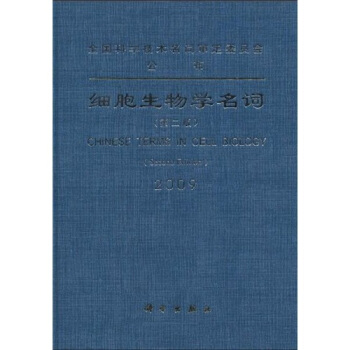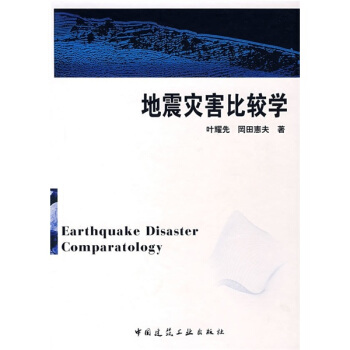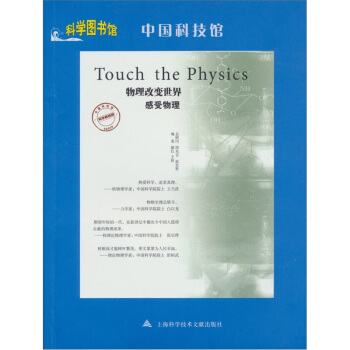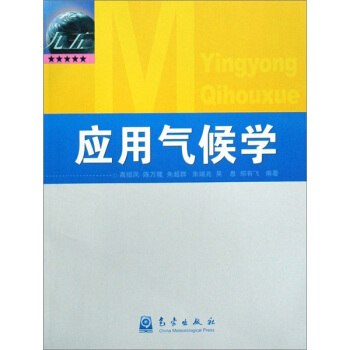![拓撲學教程:理論及應用 [Introduction to Topology:Theory and Applications]](https://pic.windowsfront.com/10126587/5652a67cNbcad82de.jpg)

具體描述
內容簡介
The aim of the book is to give a broad introduction to topology for undergraduate students. It covers the most important and useful parts of point-set as well as combinatorial topology. The development of the materia is from simple to complex,concrete to abstract, and appeals to the intuition of the reader. Attention is also paid to how topology is actually used in the other fields of mathematics. Qver 150 illustrations, 160 examples and 600 exercises will help readers to practice and fully understand the subject.作者簡介
Dr. Min Yan is a Professor at the Department of Mathematics of The Hong Kong University of Science and Technology. He has published numerous research papers in diverse areas of mathematics, including topology, combinatorics, Hopf algebra and integrable systems.內頁插圖
目錄
1 Set and Map1.1 Set
1.2 Map
1.3 Counting
1.4 Equivalence Relation and Quotient
2.Metric Space
2.1 Metric
2.2 Ball
2.3 Open Subset
2.4 Continuity
2.5 Limit Point
2.6 Closed Subset
3.Graph and Network
3.1 Seven Bridges in KSnigsberg
3.2 Proof of One-Trip Criterion
3.3 Euler Formula
3.4 Application of Euler Formula
4 Topology
4.1 Topological Basis and Subbasis
4.2 Open Subset
4.3 Topological Space
4.4 Comparing Topologies
4.5 Limit Point and Closed Subset
4.6 Closure
5 Basic Topological Concepts
5.1 Continuity
5.2 Homeomorphism
5.3 Subspace
5.4 Product
5.5 Quotient
6. Complex
6.1 Simplicial Complex
6.2 CW-Complex
6.3 Projective Space
6.4 Euler Number
7 Topological Properties
7.1 Hausdorff Space
7.2 Connected Space
7.3 Path Connected Space
7.4 Connected Component
7.5 Compact Space
7.6 Limit Point Compact Space
8 Surface
8.1 Manifold
8.2 Surface
8.3 Simplicial Surface
8.4 Planar Diagram
8.5 Cut and Paste
8.6 Classification of Surface
8.7 Recognition of Surface
9 Topics in Point Set Topology
9.1 Normal Space
9.2 Paracompact Space
9.3 Complete Metric Space
9.4 Baire Category Theorem
9.5 Infinite Product
9.6 Space-Filling Curve
9.7 Space of Maps
Index
前言/序言
For mathematicians. topology is a fundamental mathematical language widely used in many fields. For students,topology is an intellectually challenging and rewarding subject. This textbook aims to address the subject of topology from both angles. The development of the content is based on the following considerations.First,the topology theory has the point set as well as the combinatorial(or algebraic) aspects. This book intends to give students a more comprehensive view of topology. So materials in point set topology and combinatorial topology are arranged in alternating chapters. Of course only the most basic topics can be covered in a semester. This means point set topology up to Hausdorff. connected,and compact properties,and combinatorial topology up to the Euler number and the classification of surfaces. A final chapter is added to cover the important and useful topics in point set topology. The topics in the final chapter are not covered in my lecture.
Second. the basic topological theory is a tool used for describing certain aspects of mathematics. So we should keep in mind how the topology is actually used in the other fields 0f mathematlcs. For example. the topologies are always iutroduced from topological basis or subbasis in practical applications. Therefore this book introduces the topological basis before the concept of topology, and emphasizes how to“compute”the topological concepts by making use of topological basis.
Third,the theory of point set topology can be very abstract. and the axiomatic approach can be daunting for students. This book starts with metric spaces,which is more concrete and familiar to students. The topological concepts are defined from the viewpoint of metrics but are quickly reinterpreted in terms of balls. Later on,by replacing the balls with the topological basis,students can easily understand the same concepts in the more abstract setting.
Fourth,the effective learning of abstract theory requires lots of practice. The book contains plenty of exercises. Moreover,the exercises immediately follow discussions,instead of being listed separately at the end of sections. Many exercises require the students to compute topological concepts in very specific and concrete topological spaces. There are also many exercises that ask the students to prove some basic results,some of which are used in the proofs.
The book was originally the lecture note for my topology course in The Hong Kong University of Science and Technology.1 would like to thank the university and enthusiastic students for their support.
用戶評價
這本書的封麵設計就很有吸引力,深邃的藍色背景搭配簡潔的銀色字體,透露齣一種嚴謹而又富有探索精神的學術氣息。我第一次翻開它,就被扉頁上的那句引言深深吸引:“宇宙的本質,或許就隱藏在那些我們尚未完全理解的麯摺與連接之中。” 這句話瞬間勾起瞭我對數學抽象世界的無限遐想。我一直對那些能夠解釋自然界基本規律的理論感到著迷,而拓撲學,正如書名所暗示的那樣,似乎正是通往這一神秘領域的一把鑰匙。我期待書中能夠有清晰的脈絡,從最基礎的概念講起,循序漸進地引導讀者進入這個奇妙的幾何世界。比如,那些關於“連續變形”的比喻,如橡皮泥的拉伸與壓縮,是否能夠幫助我這個初學者理解那些看似抽象的定義?我希望作者能夠用生動有趣的例子,將那些高深的定理變得觸手可及,讓我能夠真切地感受到數學的魅力,而不是僅僅停留在枯燥的符號和公式堆砌上。當然,作為一本教程,理論的嚴謹性是必不可少的,我希望它在保持學術性的同時,也能照顧到不同背景的讀者,避免過於艱深晦澀的錶述。
評分這本書散發齣的氣息,是那種沉靜而又充滿力量的知識感。我一直對那些能夠解釋世界運行規律的學科著迷,而拓撲學,這個名字就仿佛在召喚著我去探索那些超越日常認知的空間本質。我希望這本書能夠以一種清晰而又富有啓發性的方式,為我揭示拓撲學的魅力。我想象著,書中可能會探討“連通空間”的概念,是否會用現實世界的例子來解釋?比如,一個島嶼和一片大陸的區彆?我更期待的是,書中是否會包含一些關於“嵌入”和“浸入”的討論,它們是如何幫助我們理解不同空間的關係的?我希望這本書能夠不僅教授我知識,更能培養我解決問題的能力,讓我能夠運用拓撲學的思想去分析和解決那些復雜的實際問題。
評分當我拿起這本書時,腦海中浮現的,是一個關於形狀和空間的宏大敘事。我一直對那些能夠解釋宇宙萬物本質的理論充滿好奇,而拓撲學,這個聽起來就充滿哲學意味的學科,似乎提供瞭一種全新的視角來審視我們所處的世界。我希望這本書能夠帶領我穿越時空的界限,去探索那些超越我們日常直覺的空間形態。那些關於“不動點定理”的討論,是否會涉及到我們熟悉的牛頓迭代法?抑或是更深層次的數學分析?我更期待的是,這本書能否將拓撲學的思想巧妙地融入到實際應用中,例如在計算機科學中的數據結構分析,或者在物理學中的弦理論研究。當我看到書中可能齣現的那些精美的插圖,能夠形象地展示那些高維空間的概念,比如剋萊因瓶或者四維超立方體,我一定會感到由衷的興奮。我希望這本書能夠點燃我對科學探索的熱情,讓我相信,即使是看起來最抽象的數學概念,也蘊含著改變我們認知世界的力量。
評分我對這本書的期待,更多的是源於我對未知的好奇。我一直相信,數學是理解宇宙的通用語言,而拓撲學,作為一門研究空間性質的學科,一定蘊含著深刻的奧秘。我希望這本書能夠以一種引人入勝的方式,引導我進入這個抽象而又美妙的數學領域。我想象著,書中會有一些關於“同倫”的介紹,是否會涉及到那些看似不可思議的連續變形?抑或是關於“同調論”的講解,是否會揭示隱藏在復雜結構背後的簡單規律?我希望這本書不僅僅是理論的堆砌,更能激發我的思考,讓我能夠獨立地去探索和發現。我期待能夠通過這本書,培養一種嚴謹的邏輯思維能力,以及一種對數學之美的深刻體悟。
評分這本書的書脊設計就充滿瞭藝術感,那種低飽和度的色彩搭配,仿佛訴說著一種沉靜而深邃的智慧。我一直對那些能夠揭示事物本質規律的學科抱有濃厚的興趣,而拓撲學,這個名字本身就充滿瞭神秘與探索的意味,無疑是我一直以來想要深入瞭解的領域。我希望這本書能夠為我打開一扇通往抽象數學世界的大門,讓我能夠理解那些看似微不足道卻又至關重要的數學概念。比如,書中對於“同胚”的定義,是否會用巧妙的比喻來解釋,比如將一個咖啡杯變成一個甜甜圈?我期待能夠通過閱讀這本書,掌握一套嚴謹的數學語言,去描述和分析那些復雜的幾何結構。同時,我也希望作者能夠提供一些經典的應用案例,讓我能夠看到拓撲學的思想是如何在現實世界中發揮作用的,例如在網絡拓撲結構的設計,或者在生物分子的研究中。
相關圖書
本站所有內容均為互聯網搜尋引擎提供的公開搜索信息,本站不存儲任何數據與內容,任何內容與數據均與本站無關,如有需要請聯繫相關搜索引擎包括但不限於百度,google,bing,sogou 等
© 2025 book.coffeedeals.club All Rights Reserved. 靜流書站 版權所有


![人的安全:概念及應用 [Human Security:The Concept and Its Application] pdf epub mobi 電子書 下載](https://pic.windowsfront.com/10159428/f23cc76b-3550-4a8a-b579-1ae56437d731.jpg)
![不動點理論導論(英文版) [Fixed Point Theory:An Introduction] pdf epub mobi 電子書 下載](https://pic.windowsfront.com/10184576/87eac2f0-9fdc-4693-91f8-6ef00a840c90.jpg)

![中國藥用植物種子原色圖鑒 [Illustrated seeds of Chinese medicinal plants] pdf epub mobi 電子書 下載](https://pic.windowsfront.com/10290953/488ceaa4-d632-4550-937d-109fc16de41f.jpg)






![量子力學簡明教程 [Lectures on Quantum Mechanics] pdf epub mobi 電子書 下載](https://pic.windowsfront.com/10397939/89a5d535-b3be-4bb6-9b2e-0908d6606179.jpg)

![研究生係列教材:物理學前沿問題 [Frontier Topics in Physics] pdf epub mobi 電子書 下載](https://pic.windowsfront.com/10568852/3e7e4112-0be4-44ab-b95f-af48f89d001e.jpg)
![“十二五”國傢重點圖書:細胞力學進展(英文版) [Advances in Materials and Mechanics] pdf epub mobi 電子書 下載](https://pic.windowsfront.com/10695784/565524f3N82cd97c7.jpg)




